Winter

Animation of snow cover changing with the seasons.
|
|||||||||||||
|
Winter is the coldest season of the year, between autumn and spring, marked by the shortest days and longest nights.
Contents |
Meteorology
Meteorological winter is the season having the shortest days and the lowest average temperatures, which have the coldest weather. This corresponds to the months of December, January and February in the Northern Hemisphere, and June, July and August in the Southern Hemisphere. The coldest average temperatures of the season are typically experienced in January in the Northern hemisphere and in June or July in the Southern hemisphere. Nighttime predominates the winter season, and in some regions it has the highest rate of precipitation as well as prolonged dampness because of permanent snow cover or high precipitation rates coupled with low temperatures, precluding evaporation. Blizzards often develop and cause many transportation delays. A rare meteorological phenomenon encountered during winter is ice fog, which comprises ice crystals suspended in the air; it occurs only at very low temperatures, below about –30°C (–22°F)[1].
Accumulations of snow and ice are mostly associated with winter in the Northern Hemisphere, due to the large land masses there. In the Southern Hemisphere, the more maritime climate and the relative lack of land south of 40°S makes the winters milder; thus, snow and ice are less common in inhabited regions of the Southern Hemisphere. In this region, snow occurs every year in elevated regions such as the Andes, the Great Dividing Range in Australia, and the mountains of New Zealand, and also occurs in the southerly Patagonia region of South America. Snow occurs year-round in Antarctica.
Period
Astronomically, the winter solstice, being the day of the year which has fewest hours of daylight, ought to be the middle of the season, but temperature lag means that the coldest period normally follows the solstice, so the season is sometimes regarded (in the USA and England) as beginning at the solstice and ending on the following equinox[1][2]. In the Northern Hemisphere, depending on the year, this corresponds to the period between 21 or 22 December and 20 or 21 March . Meteorologists in the UK consider winter to be the three coldest months of December, January and February[3]. In Scandinavia, winter traditionally begins on 14 October and ends on the last day of February.[4] In many countries in the Southern Hemisphere, including Australia[5][6], New Zealand and South Africa, winter begins on 1 June and ends on 31 August. In Celtic nations such as Ireland (using the Irish calendar) and in Scandinavia, the winter solstice is traditionally considered as midwinter, with the winter season beginning 1 November, on All Hallows, or Samhain. Winter ends and spring begins on Imbolc, or Candlemas, which is 1 or 2 February . This system of seasons is based on the length of days exclusively. (The three-month period of the shortest days and weakest solar radiation occurs during November, December, and January in the Northern Hemisphere and May through July in the Southern Hemisphere.)
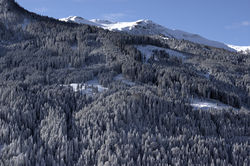
Also, many mainland European countries tend to recognize Martinmas or St. Martin's Day (11 November), as the first calendar day of winter. The day falls at midpoint between the old Julian equinox and solstice dates. Also, Valentine's Day (14 February) is recognized by some countries as heralding the first rites of spring, such as flowers blooming.
In Chinese astronomy and other East Asian calendars, winter is taken to commence on or around 7 November, with the Jiéqì (known as 立冬 lì dōng—literally, "establishment of winter").
The three-month period associated with the coldest average temperatures typically begins somewhere in late November or early December in the Northern Hemisphere and lasts through late February or early March. This "thermological winter" is earlier than the solstice delimited definition, but later than the daylight (Celtic) definition. Depending on seasonal lag, this period will vary between climatic regions.
Cultural influences such as Christmas creep may have led to the winter season being perceived as beginning earlier in recent years, although high latitude countries like Canada and Russia are usually well into their real winters before the December solstice.
Causes
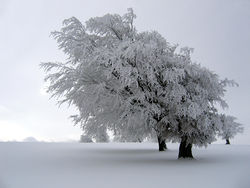
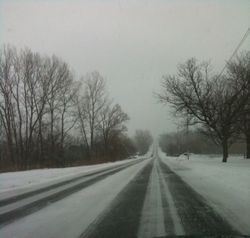
The tilt of the Earth's axis relative to its orbital plane has a dramatic effect on the weather. The Earth is tilted at an angle of 23.44° to the plane of its orbit, and this causes different latitudes on the Earth to directly face the Sun as the Earth moves through its orbit. It is this variation that primarily brings about the seasons. When it is winter in the Northern Hemisphere, the Southern Hemisphere faces the Sun more directly and thus experiences warmer temperatures than the Northern Hemisphere. Conversely, winter in the Southern Hemisphere occurs when the Northern hemisphere is tilted more toward the Sun. From the perspective of an observer on the Earth, the winter Sun has a lower maximum altitude in the sky than the summer Sun.
During winter in either hemisphere, the lower altitude of the Sun in winter causes the sunlight to hit that hemisphere at an oblique angle. In regions experiencing winter, the same amount of solar radiation is spread out over a larger area. This effect is compounded by the larger distance that the light must travel through the atmosphere, allowing the atmosphere to dissipate more heat. Compared with these effects, the changes in the distance of the earth from the sun are negligible.
Exceptionally cold winters
- 1684, when the Thames was frozen solid, hosting one of many River Thames frost fairs, and the sea froze up to two miles out around the coast.
- Year Without a Summer was the name for the northern summer of 1816, because the weather was so cold that it reminded people of winter all year.
- In Europe, the winters of early 1947,[7] 1962–63, 1981–82 and 2009–10 were considered abnormally cold.
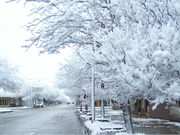
Ecology
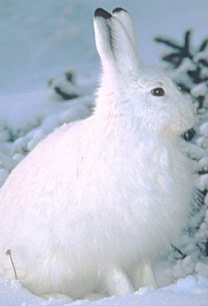
To survive the harshness of winter, many animals have developed different behavioral and morphological adaptations for overwintering:
- Migration is a common effect of winter upon animals, notably birds. However, the majority of birds do not migrate—the cardinal and European Robin, for example. Some butterflies also migrate seasonally.
- Hibernation is a state of reduced metabolic activity during the winter. Some animals "sleep" during winter and only come out when the warm weather returns; e.g., gophers, frogs, snakes, and bats.
- Some animals store food for the winter and live on it instead of hibernating completely. This is the case for squirrels, beavers, skunks, badgers, and raccoons.
- Resistance is observed when an animal endures winter but changes in ways such as color and musculature. The color of the fur or plumage changes to white (in order to be confused with snow) and thus retains its cryptic coloration year-round. Examples are the ptarmigan, arctic fox, weasel, white-tailed jackrabbit, and mountain hare.
- Some fur-coated mammals grow a heavier coat during the winter; this improves the heat-retention qualities of the fur. The coat is then shed following the winter season to allow better cooling. The heavier coat in winter made it a favorite season for trappers, who sought more profitable skins.
- Snow also affects the ways animals behave; many take advantage of the insulating properties of snow by burrowing in it. Mice and voles typically live under the snow layer.
Some annual plants never survive the winter. Other annual plants require winter cold to complete their life cycle, this is known as vernalization. As for perennials, many small ones profit from the insulating effects of snow by being buried in it. Larger plants, particularly deciduous trees, usually let their upper part go dormant, but their roots are still protected by the snow layer. Few plants bloom in the winter, one exception being the flowering plum, which flowers in time for Chinese New Year. The process by which plants become acclimated to cold weather is called hardening.
Activities

Snow activities
Many winter activities involve the use of snow in some form (which sometimes is man-made, using snow cannons):
- Bobsledding — a winter sport in which teams make timed runs down narrow, twisting, banked, purpose-built ice-covered tracks in a steerable sled.
- Skiing — the activity of gliding over snow using fiberglass planks called skis that are strapped to the skiers' feet with ski bindings.
- Sledding — a gravity-powered activity using a sled to glide downhill.
- Snow castle building — for example, constructions such as the SnowCastle of Kemi, the largest in the world.
- Snowball fight — a physical game in which snowballs are thrown with the intention of hitting someone else.
- Snowboarding — an increasingly common sport in which participants strap a composite board to their feet and slide down a snow-covered mountain.
- Snowman building — creating a manlike model out of snow.
- Snowmobiling — driving snowmobiles in snow, across frozen lakes, on public trails, or around mountains.
- Snowshoeing — a means of travel on top of the snow by increasing the surface area of the feet by wearing snowshoes.
- Winter camping - cooking, eating and sleeping outside in the snow during the winter. Those who winter camp build a shelter from evergreen tree boughs, dig a snow cave, create a quinzhee or sleep in a tent for shelter overnight.[8]
Ice activities

Many other winter activities and sports focus on ice, which may be contained in an ice rink.
- Curling — a team sport using brooms and stones. The object of the game is to slide your stones in a bullseye and get your opponent's stones out of it.
- Ice biking — the continuation of regular cycling activities in the winter and cold weather.
- Ice boating — a means of travel in a specialized boat similar in appearance to a sailboat but fitted with skis or runners (skates) and designed to run over ice instead of (liquid) water.
- Ice climbing — the recreational activity of climbing ice formations such as icefalls and frozen waterfalls.
- Ice diving — a type of penetration diving where the dive takes place under ice.
- Ice fishing — the sport of catching fish with lines and hooks through an opening in the ice on a frozen body of water.
- Ice hockey — a team sport played on the ice with skates, sticks, and a puck. The goal is to send the puck into the opposing team's net.
- Ice racing — automobile racing on ice surfaces.
- Ice sculpture — elaborate sculptures are carved out of blocks of ice.
- Ice skating — a means of travelling on ice with skates, narrow (and sometimes parabolic) bladelike devices molded into special boots.
Symbolism
Some use winter to suggest death, as in Robert Frost's "Stopping by Woods on a Snowy Evening". Some use it to suggest the absence of hope, as in C.S. Lewis' The Lion, the Witch and the Wardrobe, where it was always winter but never Christmas. Winter is one concerto in Antonio Vivaldi's "The Four Seasons," and there are many examples of four paintings all showing the same scene in different seasons. Ursula K. LeGuin's novel The Left Hand of Darkness is set on a planet named Winter. In Alex Raymond's comic strip Flash Gordon, there is a land called Frigia, where it is always winter. The land of Frigia is also featured in the serial Flash Gordon Conquers the Universe. Other uses of winter in the graphic arts occur in Winsor McCay's Little Nemo in Slumberland. There are many films in which a winter setting plays an important role, Fargo being an example. Novels such as Ethan Frome also use a winter setting to mirror the bleak, frozen feelings that the characters harbor. The film Requiem for a Dream concludes with "Act III: Winter," in which the movie reaches its chilling climax. The final vignette in James Joyce's Dubliners, 'The Dead', employs a winter motif in conjunction with themes of regret and isolation.
Mythology
In various cultures
In Persian culture the night starting winter is called Yalda (meaning: birth) and it is celebrated for thousands of years. It is referred as the eve of the birth of Mithra, the Sun God, who symbolised light, goodness and strength on earth. By the whiteness of Winter, the Sun (the white) rises again to fade away the darkness of the long night (Yalda). It is also believed that the last day of Winter (the white), which is the first day of Spring (also known as Nowrouz), is the day that all the "Good"s will over come all the "Bad"s for ever.
In Greek mythology, Hades kidnapped Persephone to be his wife. Zeus ordered Hades to return her to Demeter, the goddess of the Earth and her mother. However, Hades tricked Persephone into eating the food of the dead, so Zeus decreed that Persephone would spend six months with Demeter and six months with Hades. During the time her daughter is with Hades, Demeter became depressed and caused winter. In Welsh mythology, Gwyn ap Nudd abducted a maiden named Creiddylad. On May Day, her lover, Gwythr ap Greidawl, fought Gwyn to win her back. The battle between them represented the contest between summer and winter.
Personifications
- Old Man Winter, also known as Father Winter
- Jack Frost
- Ded Moroz
- Snegurochka
- Vetr
- Sinterklaas
See also
|
Human-related:
|
Weather-related:
|
References
- ↑ winter. (2009). In Encyclopædia Britannica. Retrieved 13 May 2009, from Encyclopædia Britannica Online: http://www.britannica.com/EBchecked/topic/645543/winter
- ↑ solstice. (2009). In Encyclopædia Britannica. Retrieved 13 May 2009, from Encyclopædia Britannica Online: http://www.britannica.com/EBchecked/topic/553654/solstice
- ↑ Meteorological Glossary (Sixth ed.). London: HMSO. 1991. p. 260. ISBN 0-11-400363-7.
- ↑ vinter. (2009). The Norwegian Meteorological Institute. Retrieved 31 August 2009, from: http://met.no/./?module=Articles;action=Article.publicShow;ID=1104
- ↑ Meteorological Glossary. Retrieved 21 June 2009 from Australian Bureau of Meteorology: http://www.bom.gov.au/climate/glossary/seasons.shtml
- ↑ Images from around Australia on first day of Winter 2009: http://www.abc.net.au/local/photos/2009/06/02/2583319.htm
- ↑ Winter of 1947
- ↑ "Outdoor Action Guide to Winter Camping". Curtis, Rick , Outdoor Action Program, The Trustees of Princeton University. 05 Sep 2010. <http://www.princeton.edu/~oa/winter/wintcamp.shtml>
Further reading
- Rosenthal, Norman E. (1998). Winter Blues. New York: The Guilford Press. ISBN 1-57230-395-6
External links
- Winter of animals and plants in Finland by the Northern Nature Project
- Native American seasons myths from the Zion Natural History Association
|
|||||||||||